Dental Anxiety and Oral Health
Anxiety is a real disease. Doctors have categorized it as a mental health disorder. And to treat it properly, we need to treat it like a disease. However, most dentists are not trained to provide anxiety-free dentistry to their patients. Dentists for anxious patients understand that the patient is not just there for dental care. The patient is there because the dentist recognizes the link between dental anxiety and phobias, and knows how to manage the patient’s anxiety while providing dental care. Lack of regular dental care leads to poor dental health, which leads to medical complications. We’ll first look at how anxiety can impact overall health and oral health negatively. Then we will look at how a dental anxiety dentist can help the patient overcome these obstacles.

Anxiety and Health

Anxiety, stress, and depression often go together. And they all lead to physiological changes in the body which can impact the patient’s health negatively. These 3 represent the corners of a triangle forming a vicious cycle. Anxiety can lead to stress and/or depression. Depression can cause anxiety and place the patient under more stress. And stress can lead to feeling anxious which can also cause depression. You can see how these are so closely intertwined.
One of the common physiological symptoms we see as a result of anxiety is high blood pressure. This places a greater amount of workload on the cardiovascular system and increases the risk of heart disease or stroke. Stressed and anxious patients often have a high blood sugar levels. This can lead to diabetes in the long run. Stress also causes the body to slow down its metabolism. This in turn results in the body storing more of its energy backup in the form of fat. This weight gain can negatively impact a patient’s self-image, which can lead to depression. Anxiety also places a greater load on the body’s immune system. Since the body’s defense mechanism is stretched thin, this leaves the body more prone to developing different ailments (e.g. catching a cold). Who would have thought that mental health can have such significant health consequences?
Anxiety and Mental Health
Anxiety is classified as a mental health disorder. This means that poor mental health can lead to anxiety. And anxiety itself can make mental health even worse. To see this clearly, let’s make an analogy to heart disease.
Heart disease can cause high blood pressure. But it can also go the opposite way. High blood pressure (say in someone who enjoys a salty diet) can lead to heart disease. This person may have a healthy heart to start off with. Their high salt diet though causes their body to retain more fluids which then increases their blood pressure. This increase in blood pressure makes their heart have to pump harder which can lead to the development of heart disease. The same thing can be said regarding anxiety and mental health. Anxiety can lead to poor mental health the same as high blood pressure can cause poor cardiac health. Besides the medical and mental health consequences, anxiety places oral health at risk.
Anxiety and Oral Health
Anxiety impacts our dental health. We discussed how anxiety can lead to diabetes. People with diabetes are at an increased risk for periodontal disease. Gum disease leads to the accumulation of high levels of bacteria in the patient’s bloodstream. This increase in bacteria has been linked to heart disease. You can read about the medical consequences of gum disease here. Medical consequences aside, anxiety also takes a toll on mental health.
Oral health is greatly influenced by how well patients take care of their teeth. The better the patient cares for their teeth and gums, the fewer dental problems they will have. However, patients who suffer from anxiety are not the best when it comes to their oral hygiene. They will not be as diligent when it comes to brushing and flossing. Oral health is also influenced by the foods we eat.
Anxious individuals typically do not have a healthy, and balanced diet. Their dietary choices (e.g. processed foods, fast foods, etc.) lead to a higher level of dental plaque formation. This coupled with poor dental hygiene leads to faster development of dental caries and gum disease. And to top it off, anxious patients do not do well at the dentist. So even though they need the most help from a dental provider, they often postpone, delay and sometimes avoid going to the dentist altogether.
Anxious Dental Patient
An anxious dental patient will avoid going to the dentist as much as possible. Their only motivation for going is their pain. They will not go to the dentist to prevent problems. They only go when they have a problem. and typically these are huge problems by the time they walk into a dentist’s office. This is a typical mouth of an anxious dental patient when they first see the dentist.
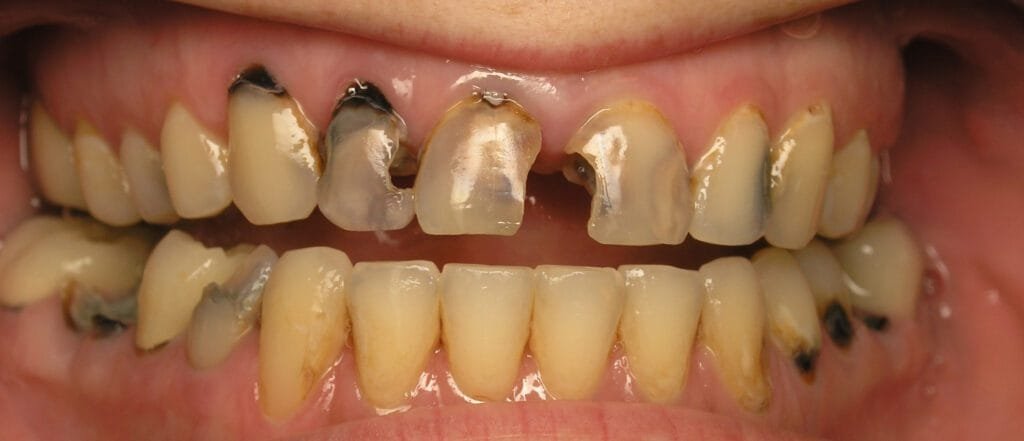
Dentist for Anxiety and Anxious Patients
The medical profession has been slow to accept and treat mental health. They have only started giving mental health the attention it deserves in the last few decades. And with mental health having such far-reaching consequences in everyone’s life, they are finally recognizing its significance.
Most dentists also are not properly trained in dealing with dental anxiety. What they haven’t understood is that an anxious patient is very different than a patient with average anxiety. Anxious patients typically view the dentist not as their friend, but rather as an enemy. This can be based on a previous negative experience or an unrealistic fear based on what they have heard. Anxiety also heightens the patient’s perception of pain. So any small thing the dentist needs to do causes tremendous discomfort for the patient. And that’s why it’s important to consider these patients as candidates for sedation dentistry.
Dental Anxiety Management
Sedation, or “sleep” dentistry, has made dentistry possible for patients with dental anxiety and phobia. A dental anxiety dentist can not only fix the “dental” disease, but they can also help the patient manage their anxiety. Dr. Sonny Eslampour has treated many highly anxious patients successfully with sedation dentistry. He can do the same for you. Contact us now and start taking control of your anxiety.



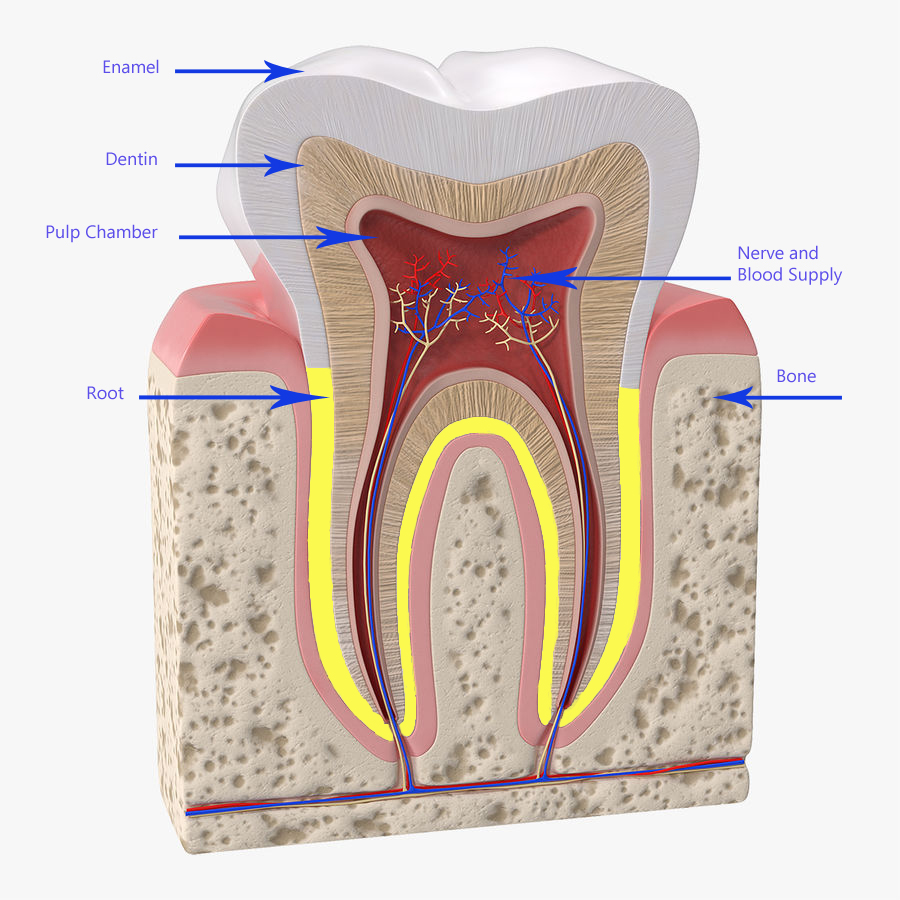
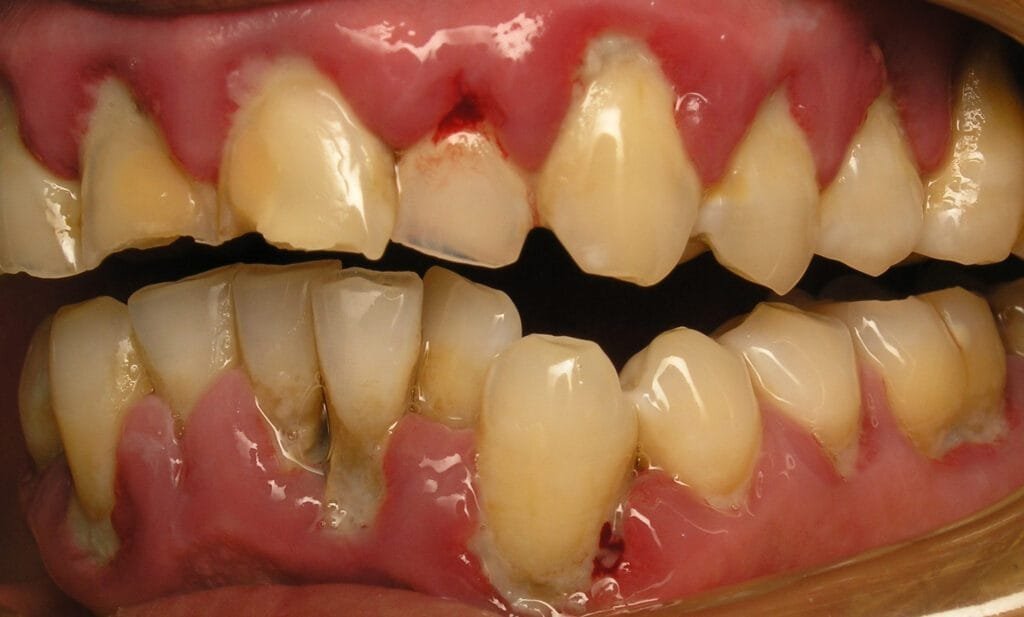


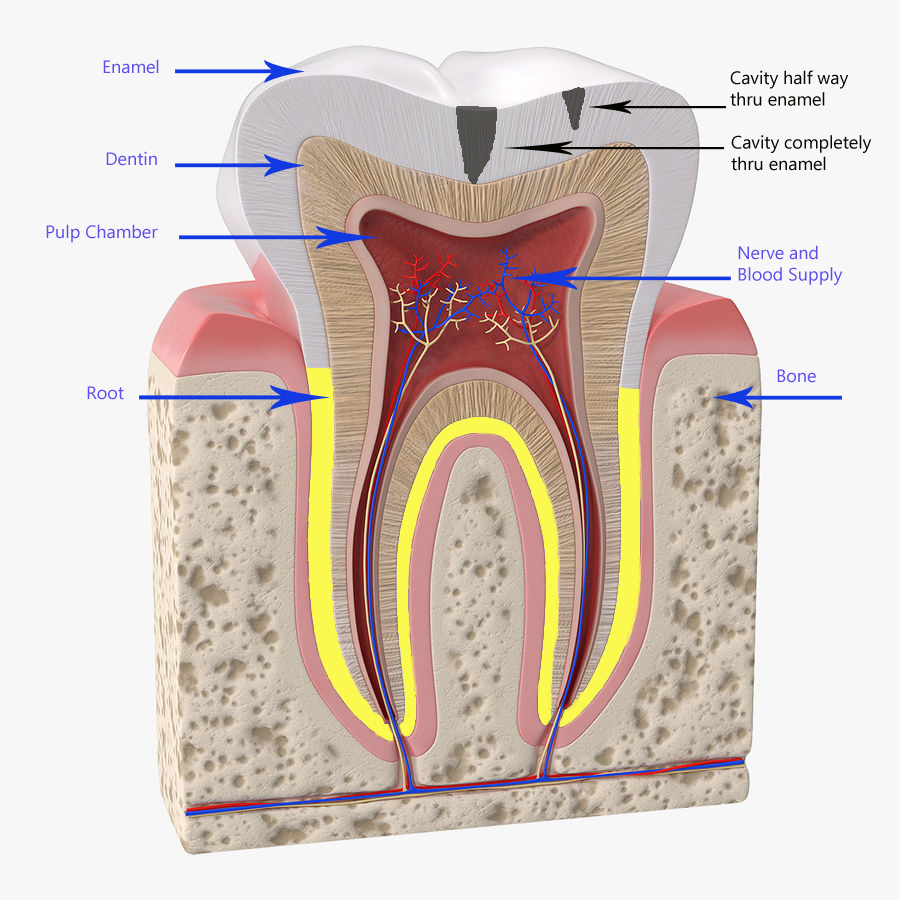
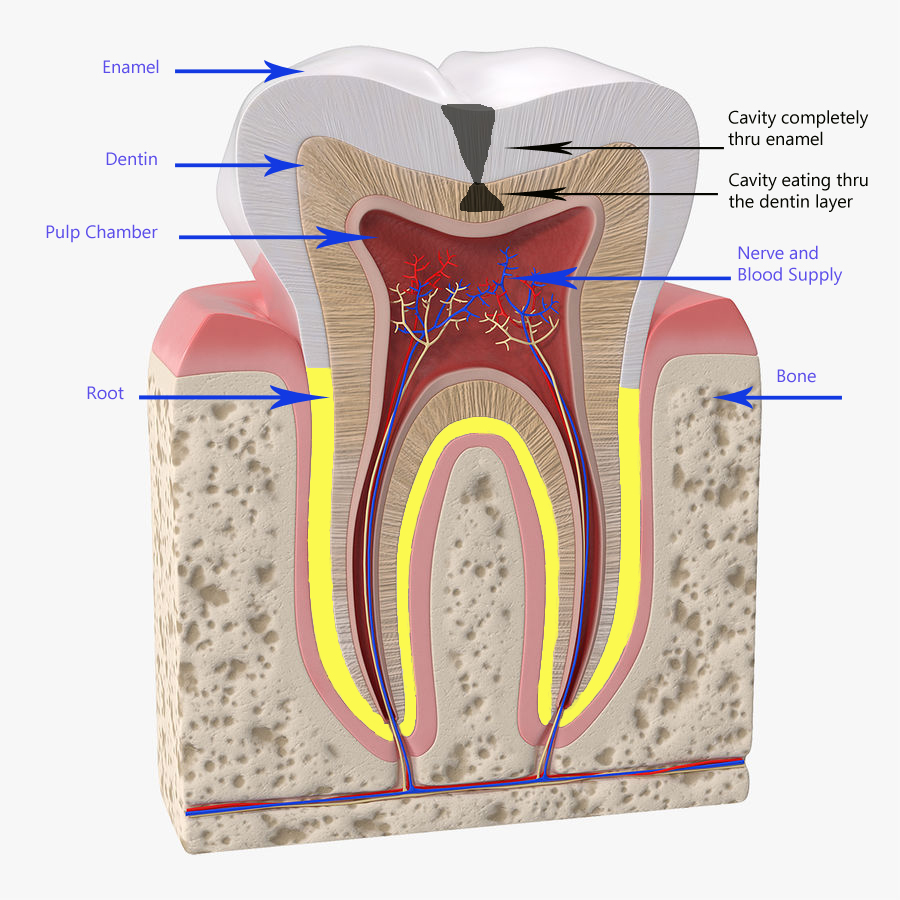
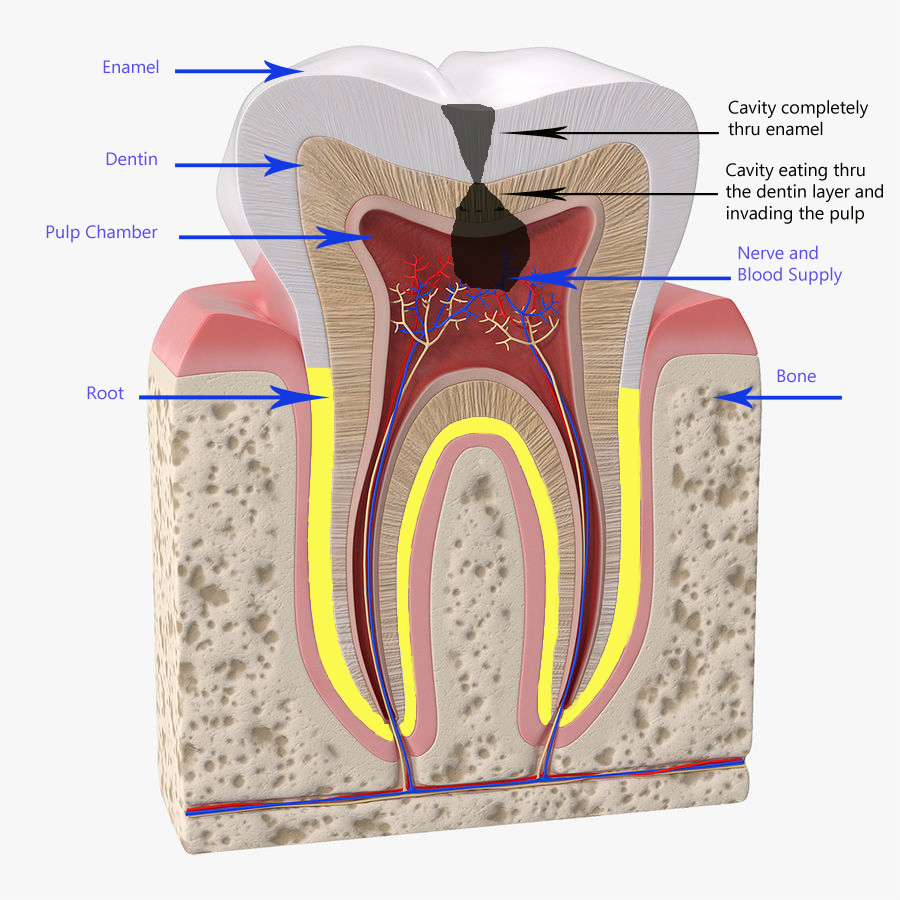
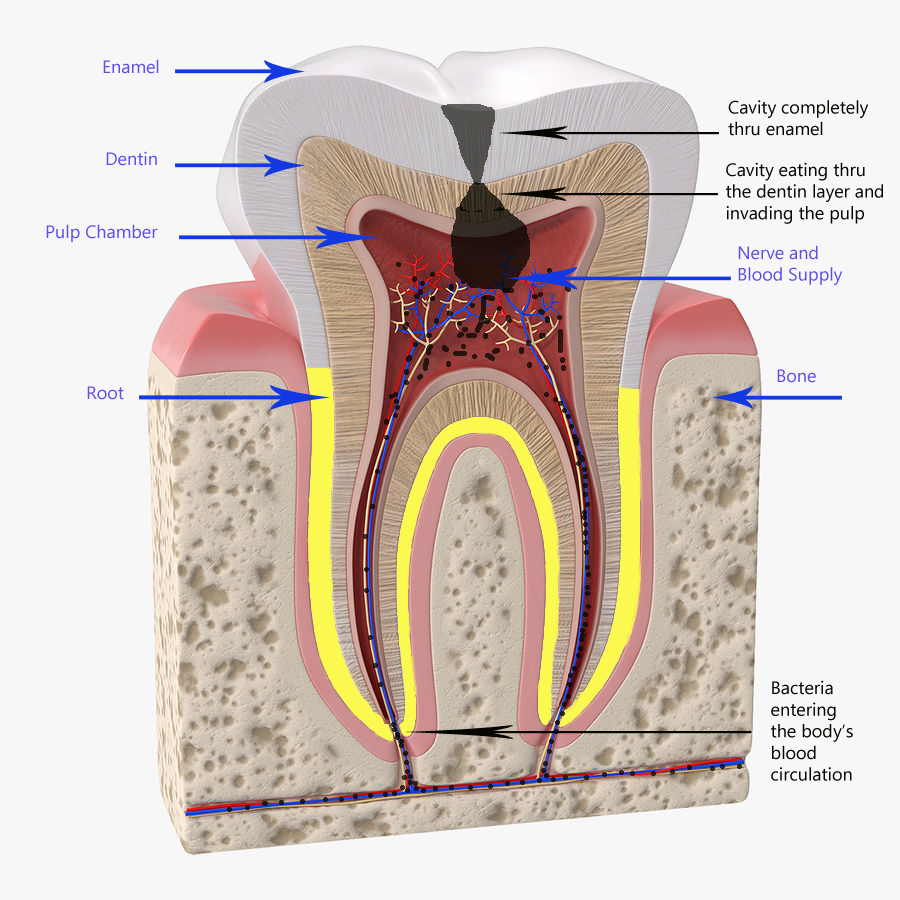
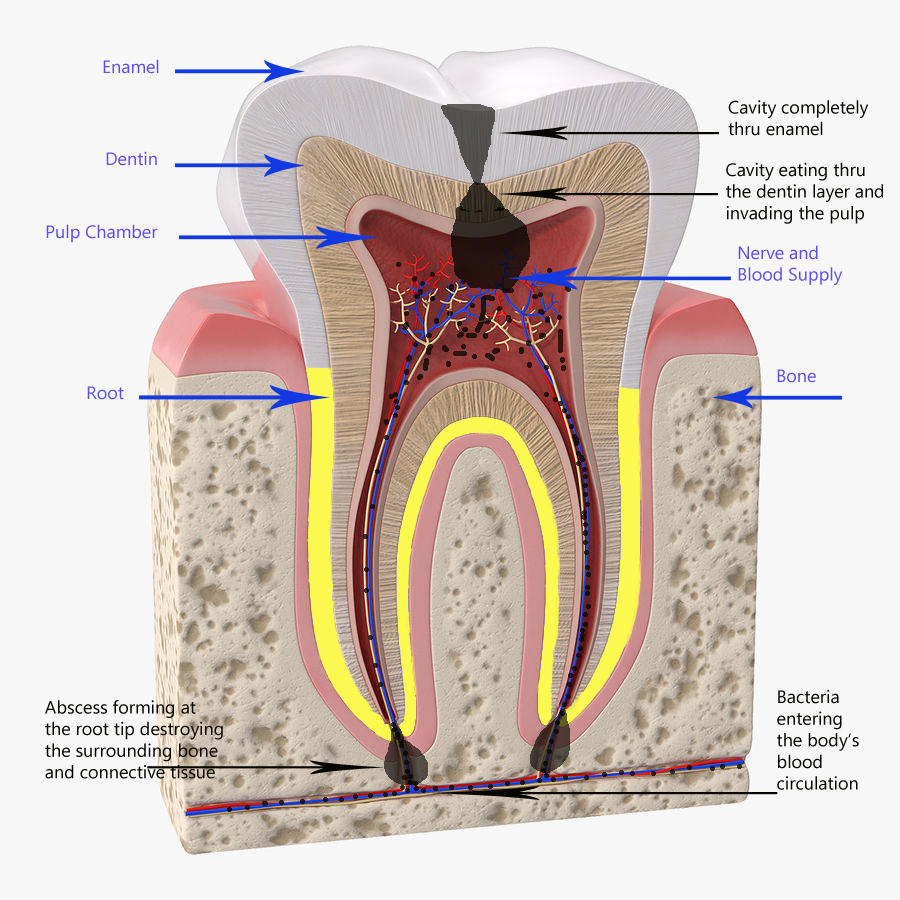
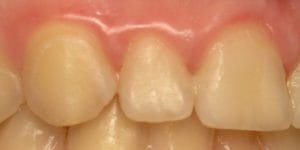

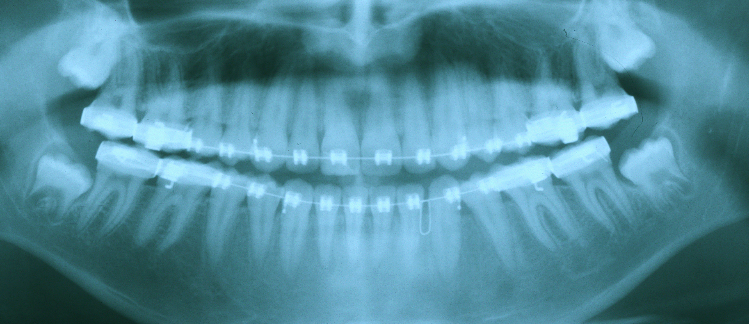

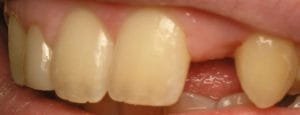
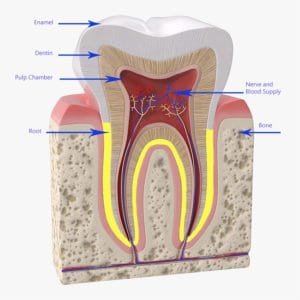

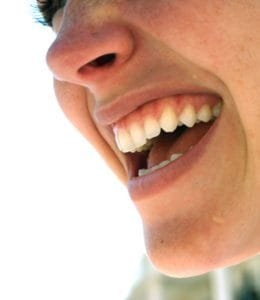 An adult tooth replaces each baby tooth. And on top of that, we get 12 more adult teeth with no baby teeth counterparts. There are a total of sixteen teeth on the top jaw of a human adult. These teeth are larger than the baby teeth, and there are more of them, promoting further jaw growth and development. The top teeth have a significant impact on the lip support, the esthetics of the smile, and the extent to which the lower jaw develops.
An adult tooth replaces each baby tooth. And on top of that, we get 12 more adult teeth with no baby teeth counterparts. There are a total of sixteen teeth on the top jaw of a human adult. These teeth are larger than the baby teeth, and there are more of them, promoting further jaw growth and development. The top teeth have a significant impact on the lip support, the esthetics of the smile, and the extent to which the lower jaw develops. Teeth have a tremendous impact not just on our smile but also on our survival and quality of life. Even though we have 32 adult teeth, to begin with, most of us end up with 28 (after removing the four wisdom teeth). Some of us even lose more teeth because of braces, leaving only 24 teeth. And there are lots of people that have one or more teeth pulled or missing for other reasons than the ones we talked about already. If our finger is hurting or broken, we don’t even begin to consider cutting it off. Why is it that people often have a “bad” tooth extracted without a second of doubt? Is it because we have so many more left? When we consider each tooth’s importance in the mouth, we realize that removing teeth is not a good choice. At
Teeth have a tremendous impact not just on our smile but also on our survival and quality of life. Even though we have 32 adult teeth, to begin with, most of us end up with 28 (after removing the four wisdom teeth). Some of us even lose more teeth because of braces, leaving only 24 teeth. And there are lots of people that have one or more teeth pulled or missing for other reasons than the ones we talked about already. If our finger is hurting or broken, we don’t even begin to consider cutting it off. Why is it that people often have a “bad” tooth extracted without a second of doubt? Is it because we have so many more left? When we consider each tooth’s importance in the mouth, we realize that removing teeth is not a good choice. At 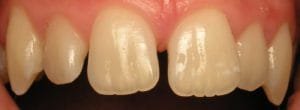 Do you have a gap in your smile? Do gappy teeth take away from your smile and self-confidence? Well, fret not. Gaps between the teeth can be corrected in many ways. In this article, we’ll talk about the various reasons why gaps exist between teeth. We’ll also review different treatment options when it comes to fixing gappy teeth and smiles.
Do you have a gap in your smile? Do gappy teeth take away from your smile and self-confidence? Well, fret not. Gaps between the teeth can be corrected in many ways. In this article, we’ll talk about the various reasons why gaps exist between teeth. We’ll also review different treatment options when it comes to fixing gappy teeth and smiles.
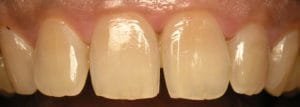
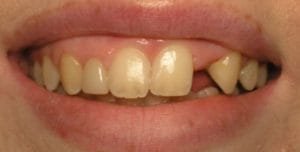 There are cases where the teeth and the jaw bone are both the right size, but there are congenitally missing teeth causing excessive spacing to remain.
There are cases where the teeth and the jaw bone are both the right size, but there are congenitally missing teeth causing excessive spacing to remain.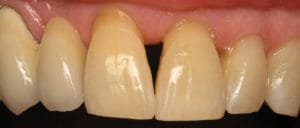
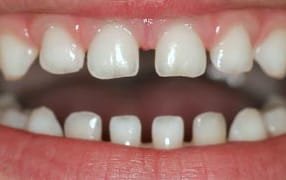 Gaps between teeth exist due to several reasons. However, your dentist doesn’t need to treat and fix all gaps between teeth. For example, children usually have gapping between their “baby teeth.” This serves 2 purposes. One, it reduces the chances of cavities in between the teeth as it allows for easier brushing. The second reason is that “adult” teeth are wider than their baby teeth predecessors. The spacing in a child’s mouth, due to this reason, usually corrects itself as the child grows and gets the grown-up teeth. In rare instances, the front teeth have a small piece of soft tissue (called the frenulum) in between them. Your dentist may recommend removing the frenulum depending on its severity.
Gaps between teeth exist due to several reasons. However, your dentist doesn’t need to treat and fix all gaps between teeth. For example, children usually have gapping between their “baby teeth.” This serves 2 purposes. One, it reduces the chances of cavities in between the teeth as it allows for easier brushing. The second reason is that “adult” teeth are wider than their baby teeth predecessors. The spacing in a child’s mouth, due to this reason, usually corrects itself as the child grows and gets the grown-up teeth. In rare instances, the front teeth have a small piece of soft tissue (called the frenulum) in between them. Your dentist may recommend removing the frenulum depending on its severity.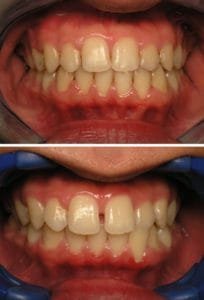 Thanks to advances in
Thanks to advances in 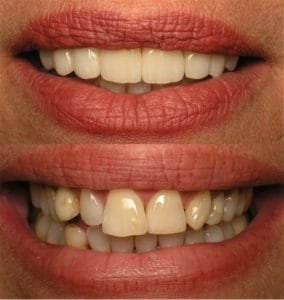
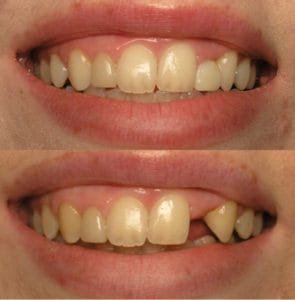 There are times that a combination of treatment options yields the best results. For example, in a congenitally missing tooth (usually a front tooth), the dentist can close the space using orthodontics. While possible, this treatment by itself would probably end up causing other problems such as gum issues and even chewing difficulties.
There are times that a combination of treatment options yields the best results. For example, in a congenitally missing tooth (usually a front tooth), the dentist can close the space using orthodontics. While possible, this treatment by itself would probably end up causing other problems such as gum issues and even chewing difficulties.


 Aside from tasting great, dark chocolate is rich in anti-oxidants (which help reduce aging). In some studies it has been shown to reduce the level of “stress” hormone in our body. Not only does it taste good, it’s good for you. Just watch the quantity and the sugar content. Invest in good quality dark chocolate to truly reap its health benefits.
Aside from tasting great, dark chocolate is rich in anti-oxidants (which help reduce aging). In some studies it has been shown to reduce the level of “stress” hormone in our body. Not only does it taste good, it’s good for you. Just watch the quantity and the sugar content. Invest in good quality dark chocolate to truly reap its health benefits. This fruit contains an amazing amount of omega-3 fatty acids. Avocados have been shown to boost concentration, decrease stress and improve the mood. No matter how you eat it (guacamole or sliced), it’s full of good stuff. And it tastes good too.
This fruit contains an amazing amount of omega-3 fatty acids. Avocados have been shown to boost concentration, decrease stress and improve the mood. No matter how you eat it (guacamole or sliced), it’s full of good stuff. And it tastes good too. Fish is rich in omega-3 fatty acids along w/ the healthy oil that our body needs. If you don’t like fish there are other foods that you can substitute. Seaweed, chia seeds, walnuts, flax seed and fish-oil supplements are some examples. Not all forms of fish are healthy though. Fatty fish like Herring, Salmon, Tuna top the healthy fish list while Shark and Swordfish may contain higher levels of mercury and should be avoided.
Fish is rich in omega-3 fatty acids along w/ the healthy oil that our body needs. If you don’t like fish there are other foods that you can substitute. Seaweed, chia seeds, walnuts, flax seed and fish-oil supplements are some examples. Not all forms of fish are healthy though. Fatty fish like Herring, Salmon, Tuna top the healthy fish list while Shark and Swordfish may contain higher levels of mercury and should be avoided. Not only are nuts like almonds, pistachios and walnuts rich in Vitamin B, they also contain high levels of good oil/fat that our body needs. Nuts are also high in magnesium which has been linked to reduced anxiety.
Not only are nuts like almonds, pistachios and walnuts rich in Vitamin B, they also contain high levels of good oil/fat that our body needs. Nuts are also high in magnesium which has been linked to reduced anxiety. Studies have shown that high levels of vitamin C help ease stress. Not only are they good for your immune system, they help reduce anxiety too. Examples are strawberries, oranges and grape fruits.
Studies have shown that high levels of vitamin C help ease stress. Not only are they good for your immune system, they help reduce anxiety too. Examples are strawberries, oranges and grape fruits.